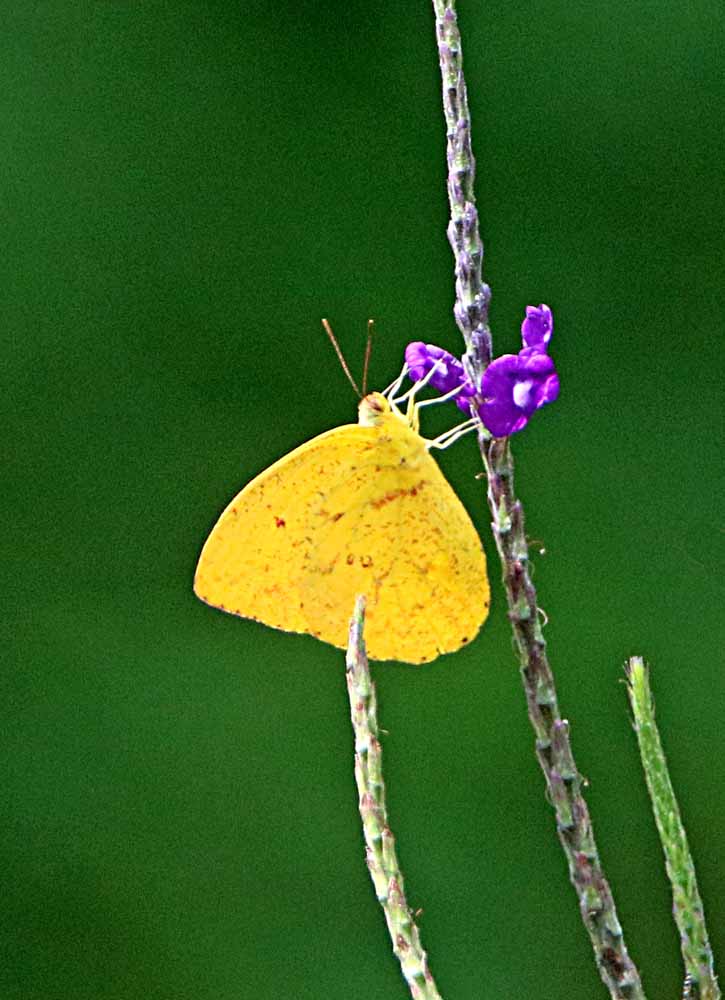One of the many spotted Yellows and Whites that I see so many of here, I’m finding them easier to identify. Just one shot from my August garden here, but you can see more in my GALLERY: Cloudless Sulphur, Phoebis sennae (linked).
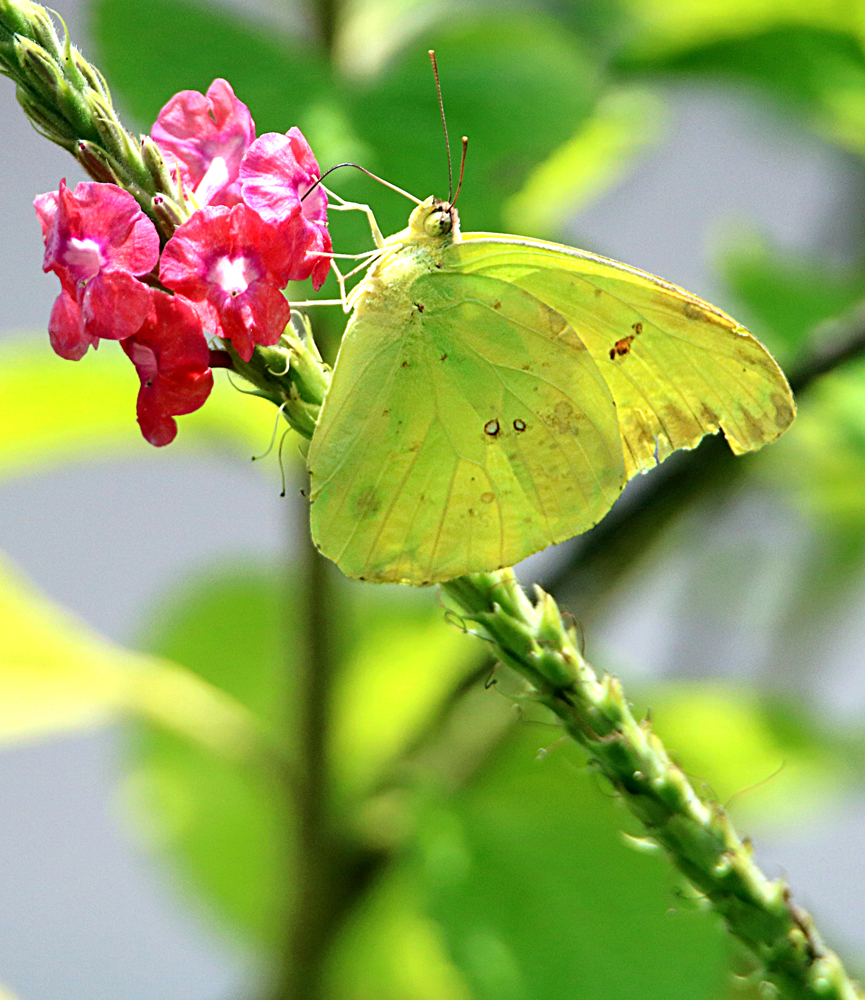
¡Pura Vida!
Butterflies photographed in Costa Rica and nearby
One of the many spotted Yellows and Whites that I see so many of here, I’m finding them easier to identify. Just one shot from my August garden here, but you can see more in my GALLERY: Cloudless Sulphur, Phoebis sennae (linked).

¡Pura Vida!
Another dull brown skipper is made interesting with the addition of color – in this case a simple rim of yellow. To see him from different angles and postures, see other shots in my gallery: Yellow-rimmed Skipper, Aethilla lavochrea (linked). Here’s just one shot for now, from my garden in August . . .
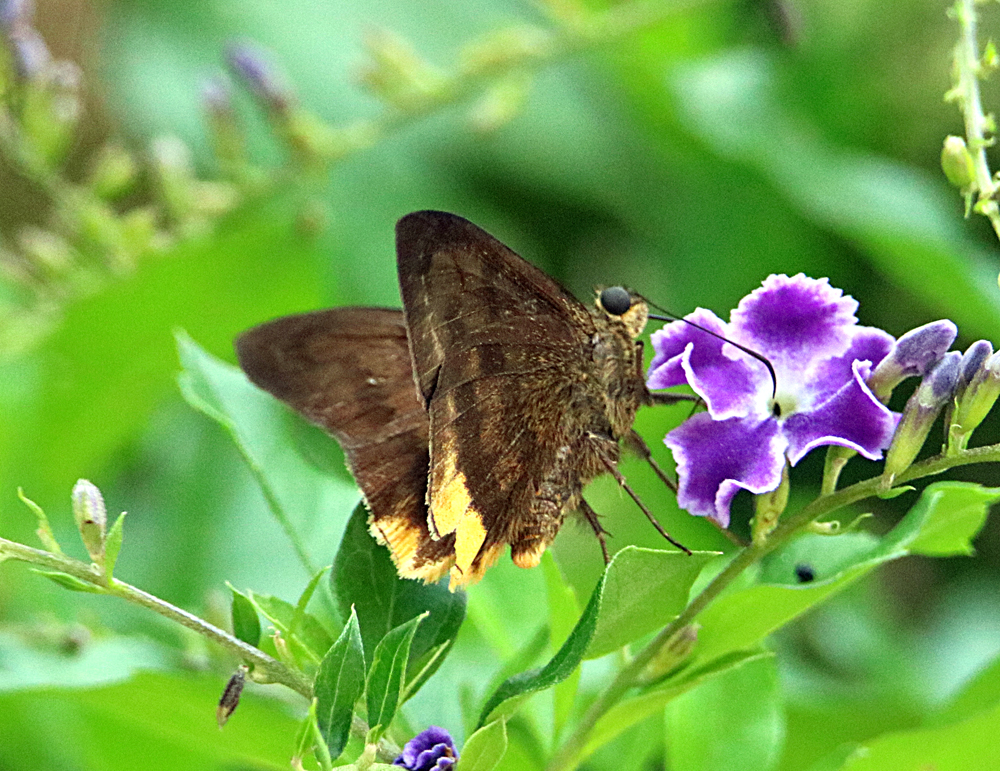
¡Pura Vida!
This other common white for my garden is not as difficult to identify because of the strongly showing veins on underside of wings and the yellow accent spots with black or brown spot inside on the upper wings. The only possible confusion is that there is a Yellow Angled-Sulphur with the underside of wings almost identical, though supposedly more yellowish while the White is usually more white and/or greenish, plus the Yellow Angled-Sulphur does not have the topside yellow accent spots. Also there is one light brown spot on the underside of the wings of both which is rounded on the White and elongated on the Yellow. Little details make the difference in identification! 🙂 Just one image here from my garden and you can see more in my White Angled-Sulphur, Anteos clorinde GALLERY (linked).
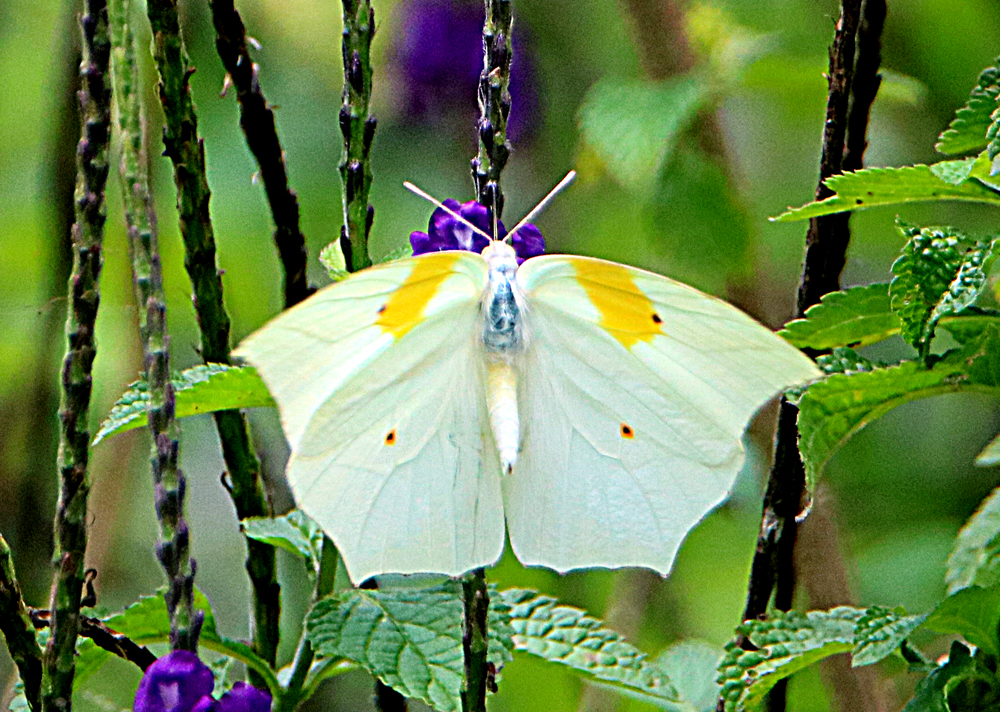
This one has always been a little difficult for me to identify because of the same big black dot and sometimes two gray dots like Howarth’s White, but I believe now that the Giant White, Ganyra josephina (linked to my gallery) is the only White with the turquoise color on antennae and legs. Check my Howarth’s White Gallery to see how similar they are with those black and gray dots confusing me. The following 3 shots from my garden in August I believe are Giant White, based on the turquoise color.
¡Pura Vida!
The Frosted Flasher, Astraptes alardus (my gallery link) is one of those surprisingly colorful butterflies in the Skipper family. Here’s 4 shots from my garden the other day with more in the gallery linked above.
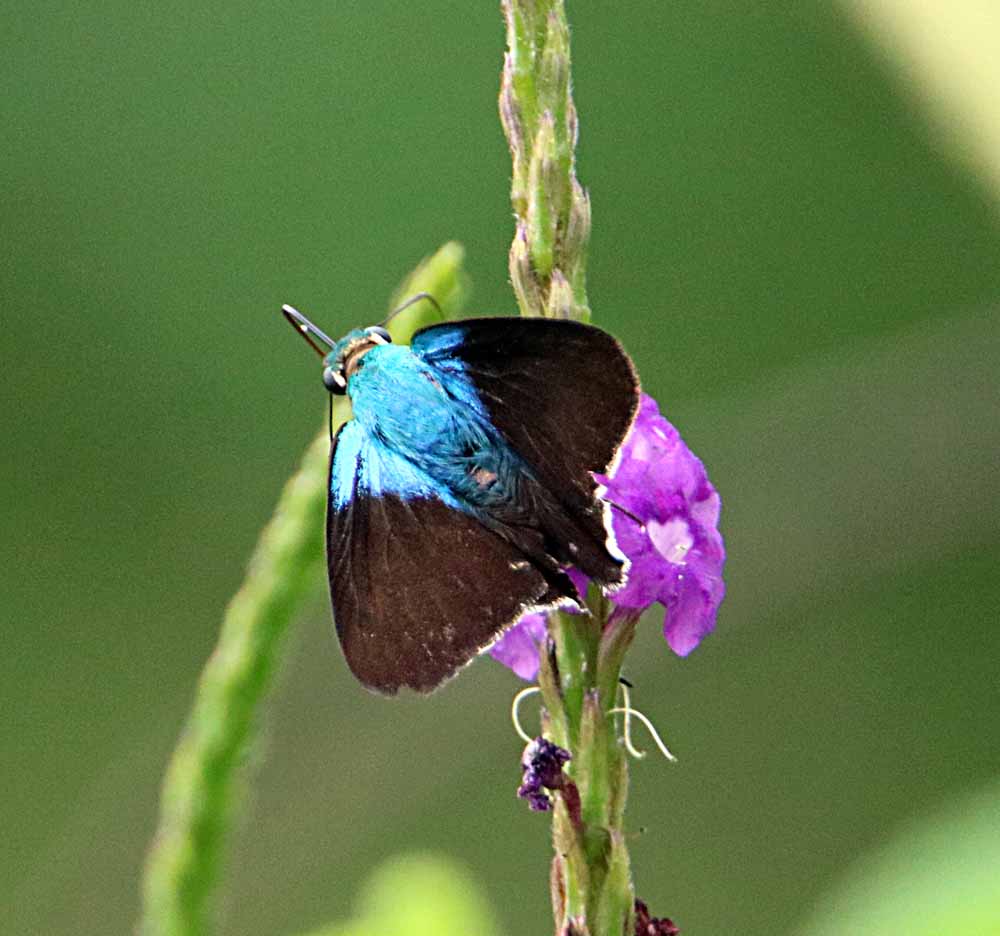
This has always been one of my favorite butterflies since I photographed my first back in 2005 in the Everglades National Park, Florida USA. And we even had a slightly different species in Tennessee called the Common Buckeye (Junonia coenia). I like the exoctic look! 🙂 Here’s just one shot from my garden earlier this month and see other photos in my Costa Rica Tropical Buckeye GALLERY.
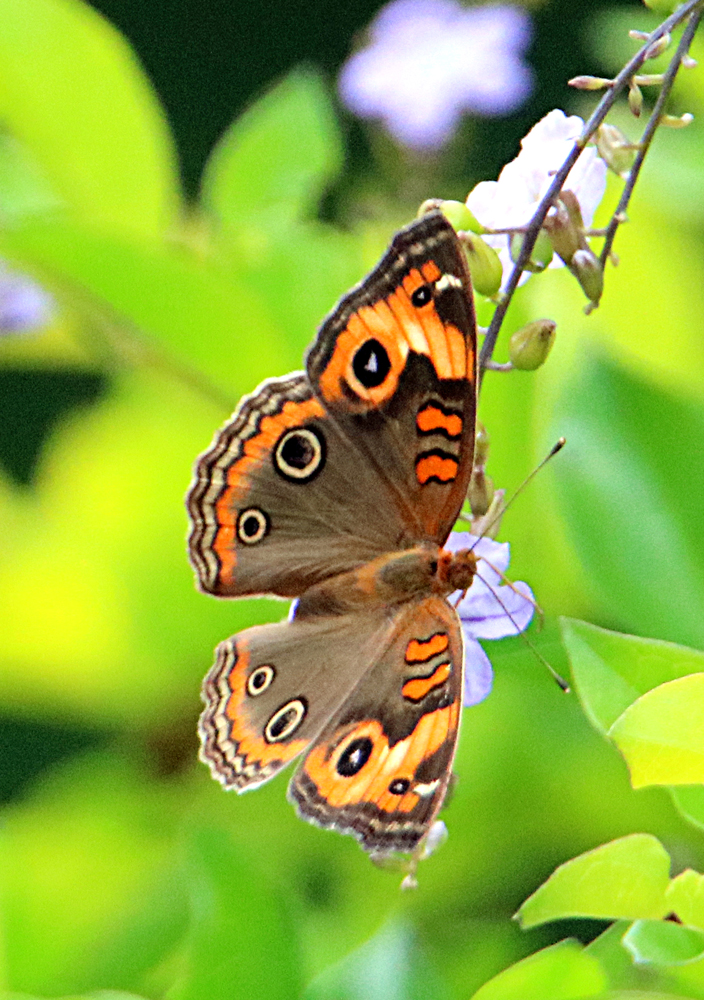
¡Pura Vida!
An attractive and different looking Skipper that I don’t see real often, but is one of those that shows up in my garden: Broken Silverdrop, Epargyreus exadeus (linked to my gallery with more photos).
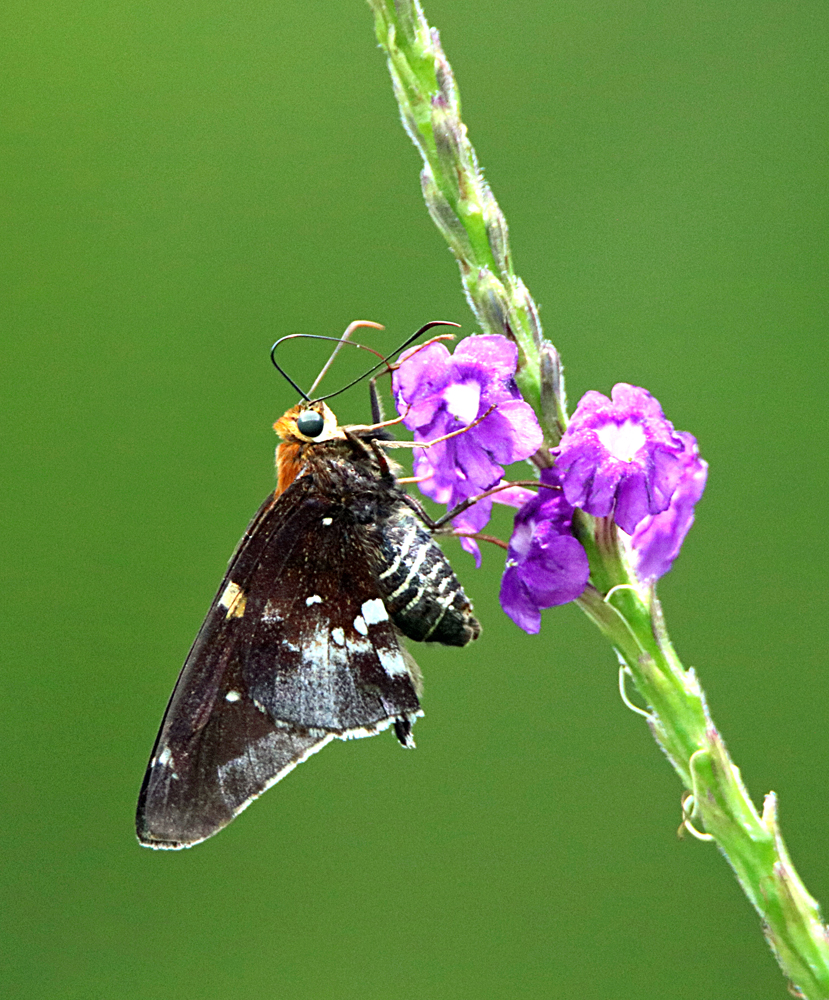
¡Pura Vida!
A more traditional-looking butterfly today! 🙂 And we do have a really large number of the orange and black butterflies, but I find some of the others “more interesting!” 🙂 The Hecale Longwing, Heliconius hecale (linked to my gallery) is found throughout Central America and could actually be divided into 3 subspecies: Hecale zuleika, Hecale fornarina, and Hecale melicerta. I think this and most of mine are zuleika. Here’s just one shot and you can go to the gallery above for more photos.
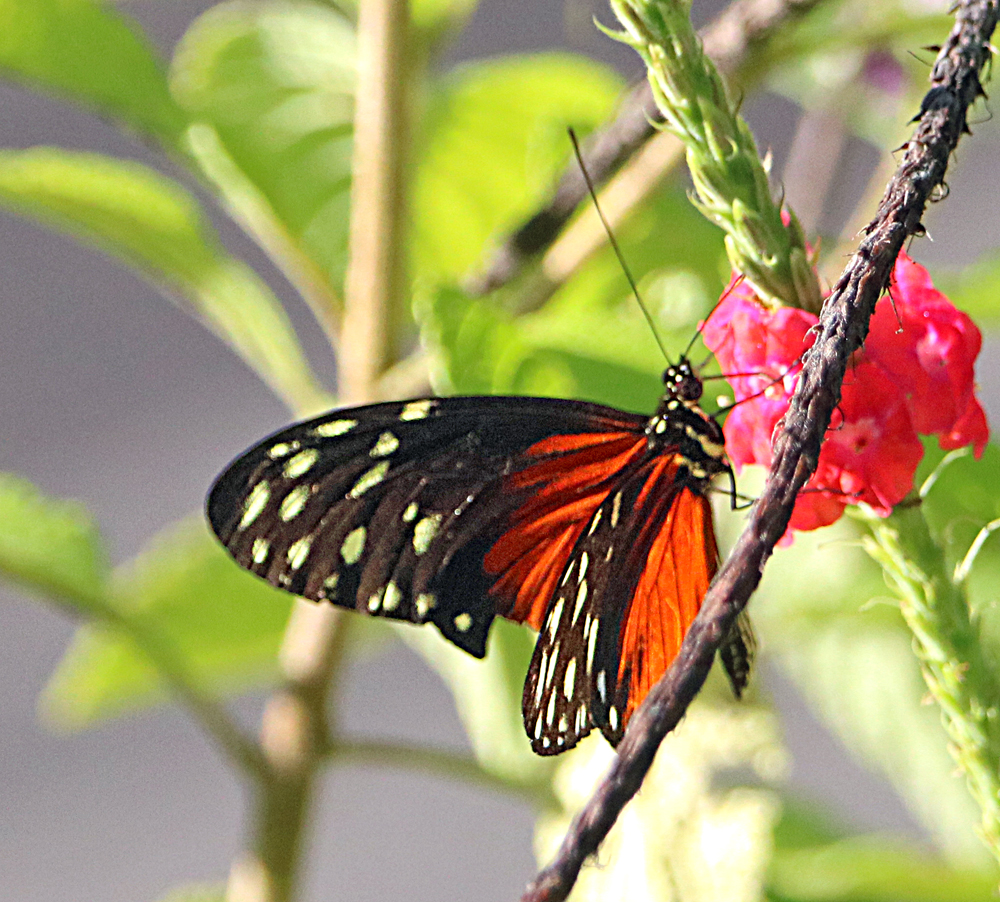
¡Pura Vida!
There are around 20 or so species labeled “Cattleheart” that are simply a category of Swallowtails with a predominantly black body, the pink or red dots and shapes on the bottom edge of their wings, and various amounts and types of white trim that when I see one, I immediately think it is one of the many Cattlehearts, BUT, there are also around a dozen or so labeled some kind of Swallowtail, that also have the pink or red dots in different configurations. 🙂 Even one as a “Pink-spotted Swallowtail.” So the identification challenge continues, though I’m pretty confident with this ID of Pink-spotted Cattleheart, Parides photinus (linked to my gallery of them) because I’ve seen and photographed them several times and in two places (my garden & Villa Caletas in Jaco). Because I consider all 5 of these August shots unique, I’m including them all in a slide show below after this one shot for the email announcement . . .
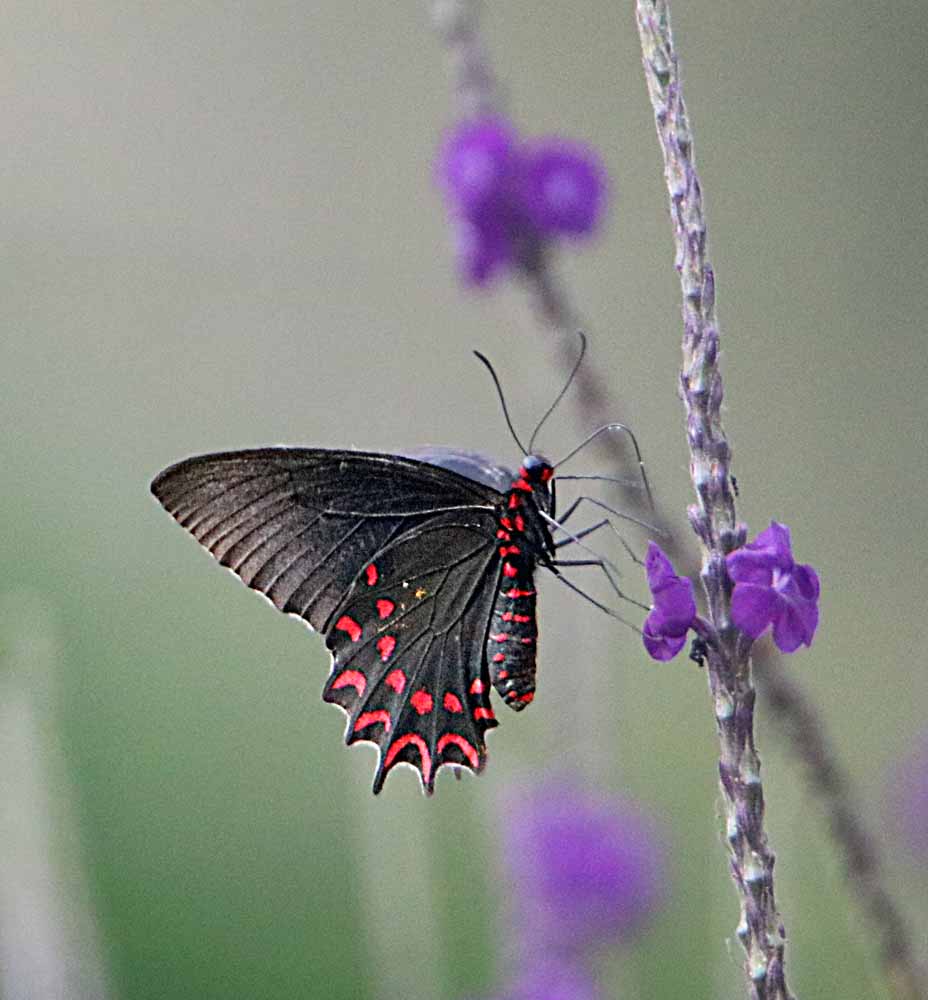
Dina Yellow, Pyrisitia dina (my gallery link) is one of many yellows, sulphurs and whites found all over Costa Rica as you can see in my Pieridae Gallery with 32 species I’ve photographed! The female of the Dina is easier to identify because she has the brown trim as seen in the feature photo or the second photo below. The male is mostly plain yellow with a few dots making the male a lot like many other yellows and so the identification challenge continues! 🙂 Two photos below . . .
